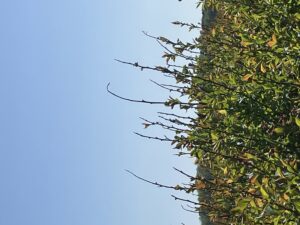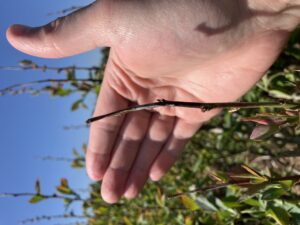Cold Damage in Blueberry
go.ncsu.edu/readext?1003849
en Español / em Português
El inglés es el idioma de control de esta página. En la medida en que haya algún conflicto entre la traducción al inglés y la traducción, el inglés prevalece.
Al hacer clic en el enlace de traducción se activa un servicio de traducción gratuito para convertir la página al español. Al igual que con cualquier traducción por Internet, la conversión no es sensible al contexto y puede que no traduzca el texto en su significado original. NC State Extension no garantiza la exactitud del texto traducido. Por favor, tenga en cuenta que algunas aplicaciones y/o servicios pueden no funcionar como se espera cuando se traducen.
Português
Inglês é o idioma de controle desta página. Na medida que haja algum conflito entre o texto original em Inglês e a tradução, o Inglês prevalece.
Ao clicar no link de tradução, um serviço gratuito de tradução será ativado para converter a página para o Português. Como em qualquer tradução pela internet, a conversão não é sensivel ao contexto e pode não ocorrer a tradução para o significado orginal. O serviço de Extensão da Carolina do Norte (NC State Extension) não garante a exatidão do texto traduzido. Por favor, observe que algumas funções ou serviços podem não funcionar como esperado após a tradução.
English
English is the controlling language of this page. To the extent there is any conflict between the English text and the translation, English controls.
Clicking on the translation link activates a free translation service to convert the page to Spanish. As with any Internet translation, the conversion is not context-sensitive and may not translate the text to its original meaning. NC State Extension does not guarantee the accuracy of the translated text. Please note that some applications and/or services may not function as expected when translated.
Collapse ▲I recently went on a farm visit to a grower that had some plants showing symptoms of dead or damaged stem tips on Premier cultivar blueberries. Once arriving, it was apparent that it was uniform across this particular field. The damaged stem tips were only at the higher positions of the plant. The stems on the lower portions of the plant appeared healthy.
We broke off some of the damaged tips to analyze the tissue damage. We found that the dead part of the inner tissue of the stem, the pith, had turned brown. This is a tell-tale sign of cold damage. This damage would have occurred the previous fall and the injury showed up when the plants started leafing out. It would have been during a time where we were experiencing moderate temperatures and then had a cold snap while the stems of the plant were still actively growing.
After finding this injury, the recommendations would be to stay timely with disease management practices and spray timing since the affected areas of the plants could be points of entry for disease. Also, mowing or pruning the affected stems would prevent issues later on. Mowing earlier after harvest will also allow time for the new growth to grow out and harden off for dormancy before cold temperatures are more likely.






